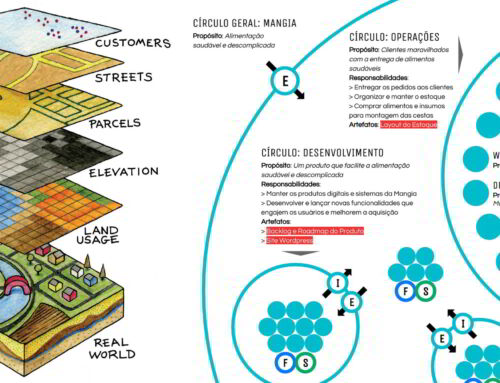The term horizontal management has been used to describe practices that seek to completely eliminate or reduce hierarchy. The ways in which this happens vary from company to company and are as broad as the term.
Horizontal management has become quite popular, with numerous books that address the topic. More recently, Frederic Laloux’s book Reinventing Organizations was translated into many languages and we see a growing demand on the subject.
Some factors have made companies look for new ways to organize work. In the information technology sector, there is a great lack of qualified professionals. In 2017, despite the crisis, there was an increase in demand. The concern with creating collaborative environments to work makes some companies look for horizontal management to attract and retain talent.
Work engagement is also a global issue. Gallup constantly publishes reports on the subject and the numbers are not encouraging. In 2017, 85% of workers surveyed were not engaged in their work. Yet another indication that there is something very wrong with the world of work.
Despite popularization, there is a lot of confusion around the term horizontal management. This text seeks to shed light on these confusions.
Differences between horizontal management and self-management
At Target Teal, we usually differentiate the terms horizontal management and self-management.
Horizontal management is:
A set of organizational practices that oppose the hierarchical structure of the chain of command, which can end it, without proposing a substitute structure. It would be the equivalent of eliminating the positions of managers and directors in a company, putting everyone in the organization with the same authority and decision-making power.
The term self-management, on the other hand, refers to something else:
Set of organizational practices that seek to distribute authority, giving clarity of responsibilities and maximum autonomy to each member of the organization. In this case, people do not report to a superior, but follow a set of rules and agreements decided upon collectively. These agreements form an organizational structure that does not require everyone to have the same decision-making power and authority, it just makes it clear how this is done and prevents the boss-subordinate relationship.
If you are familiar with Frederic Laloux’s organizational development stages, you will readily identify horizontal management as related to the green-pluralist paradigm. Self-management, on the other hand, is connected with the evolutionary-teal stage.
Horizontal management is not Holacracy and vice versa
Holacracy is commonly confused with horizontal management and sometimes even used synonymously. But make no mistake. Holacracy is a system of governance of organizations that seeks to distribute authority and govern the company by its purpose. Yes, we can say that Holacracy is a type of horizontal management. But it is such a specific type that it cannot be confused with the broader category. For more details about it, see this guide we created.
By the way: the correct spelling is Holacracy (with an a), not holocracy (with an o).
Dangers of horizontal management
Target Teal is an organizational design consultancy. We help other organizations to adopt new, more agile and adaptive ways of working. Part of our approach is focused on developing self-management practices in these companies. And yes: self-management and not horizontal management.
There is a very practical reason why we advocate self-management over horizontal management. We believe that abolishing management positions, eliminating hierarchy, or wiping out bosses without putting something in place is a very dangerous change.
Companies that call themselves practitioners of horizontal management commonly do this without putting any kind of power structure in place. They believe that by not talking about it anymore and believing that everyone is equal, everything will be resolved.
But an organization without an explicit authority structure usually contains an implicit structure that is much worse and concentrated. A famous article, entitled “The Tyranny of Structurelessness” reports how feminist groups apparently “without leadership” or structure continued with implicit and out-of-control hierarchies of power.
If you like the idea of horizontal management, look for a more structured way of distributing authority, such as the Organic Organization (O2) method.
If you want to watch an easy going conversation (in Portuguese) about Horizontal Management, checkout the Target Teal’s episode on Youtube that talks about the topic, with the presence of our special guest Rafael Jagua:
Translated by Tanya Stergiou






Leave A Comment